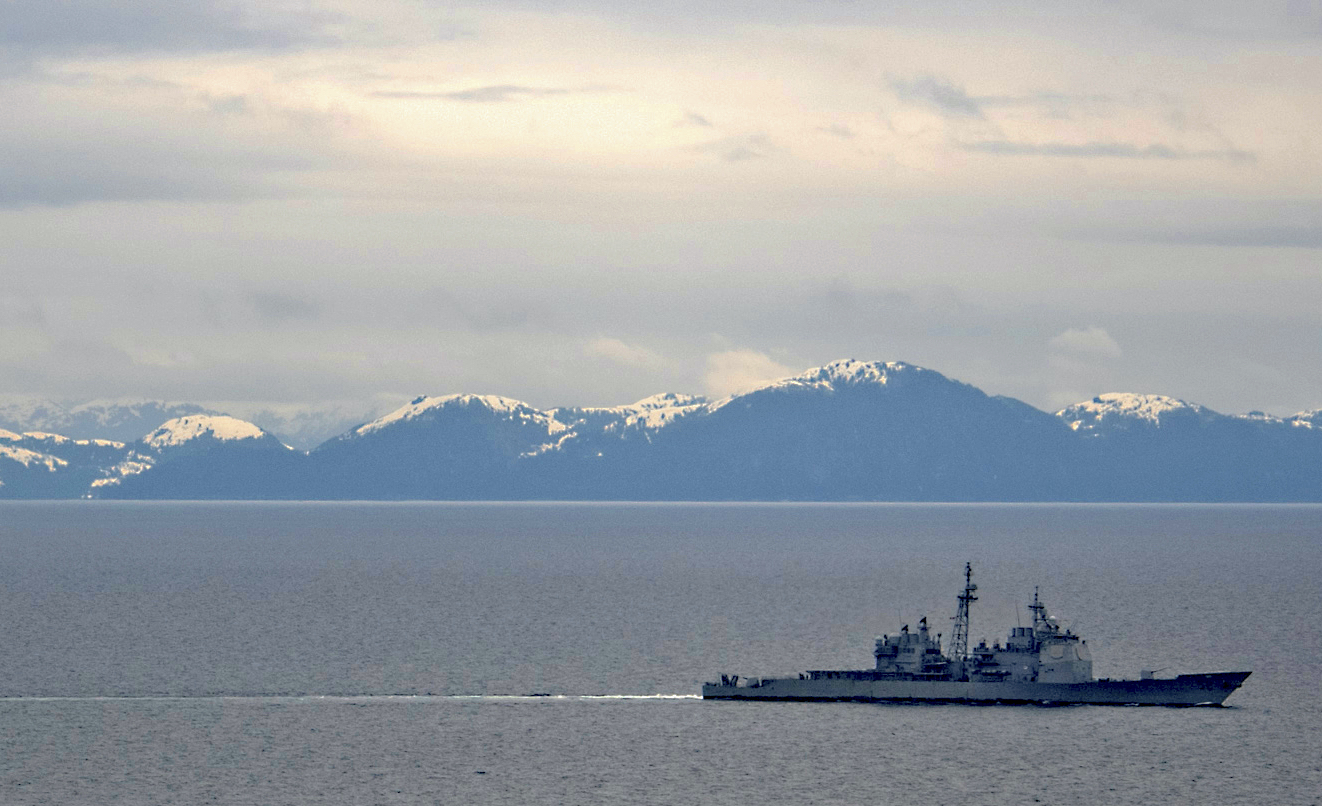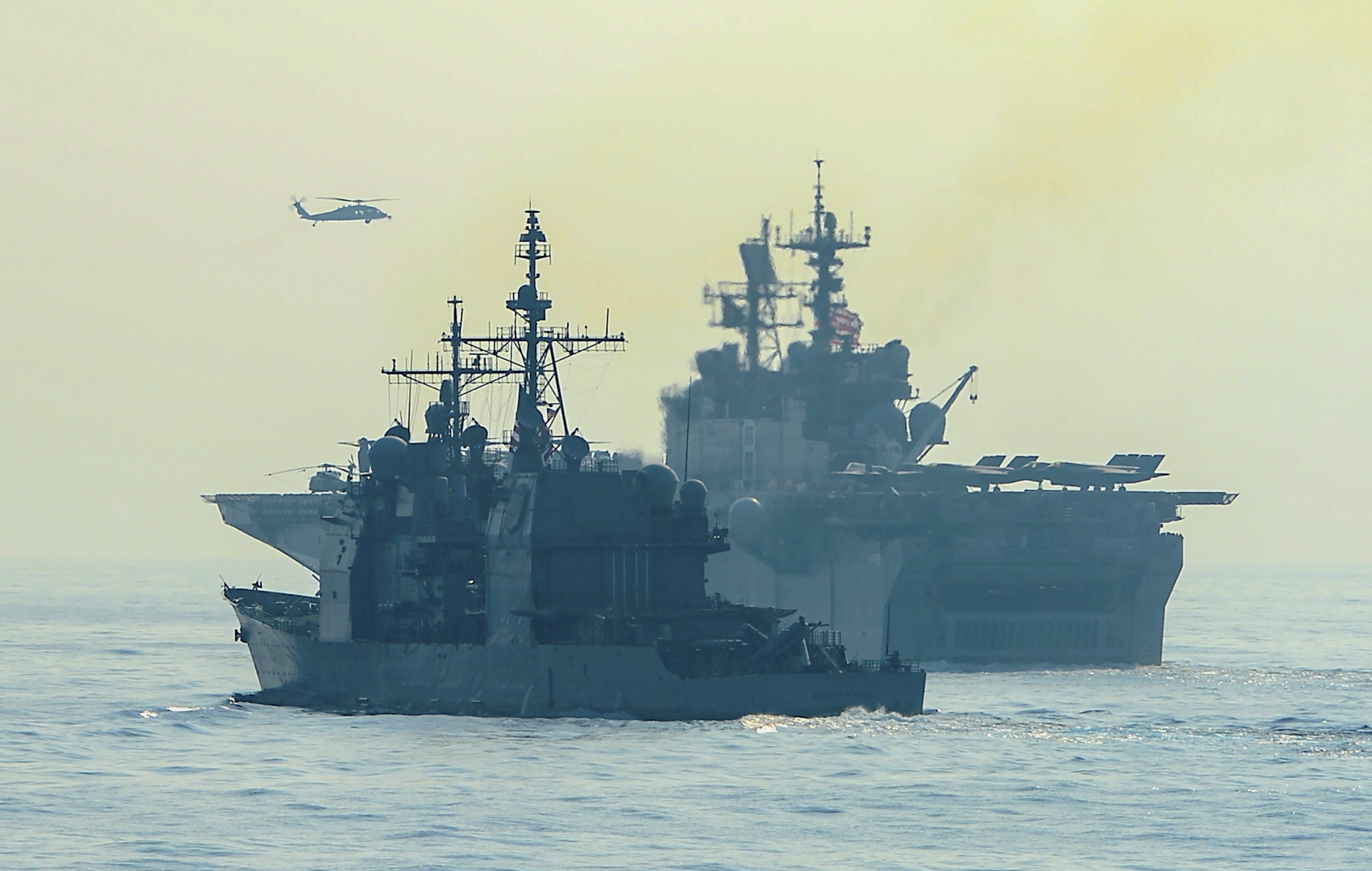
This story has been updated to correct the number of missile cells on a Ticonderoga-class cruiser and the planned number of missile cells on a Large Unmanned Surface Vehicle (LUSV).
The Navy’s proposal to decommission seven guided-missile cruisers from the fleet in the next fiscal year met extensive questions from House lawmakers on Thursday.
House Armed Services seapower and projection forces subcommittee chairman Rep. Joe Courtney (D-Conn.) during his panel’s hearing today asked the Navy’s top requirements officer how much the service would need if Congress decides to keep the cruisers in the fleet.
“If we were to retain the seven cruisers that are in the budget to be decommissioned in [Fiscal Year 20]22 – that’s five from previous budget and Hue City and Anzio in this budget – it would be roughly $5 billion across the FYDP,” Vice Adm. Jim Kilby, the deputy chief of naval operations for warfighting requirements and capabilities (OPNAV N9) told the panel, referring to the five-year budget outlook known as the Future Years Defense Program (FYDP).
“If we were to retain those ships for two years – all seven ships – that’s roughly $2.78 billion. The cost to modernize Hue City and Anzio alone is $1.5 billion approximately,” he added. “So that’s the rough breakdown of figures for those ships.”
In its Fiscal Year 2022 budget proposal, unveiled at the end of May, the Navy asked to decommission seven cruisers – USS San Jacinto (CG-56), USS Lake Champlain (CG-57), USS Monterey (CG-61), USS Port Royal (CG-73), USS Vella Gulf (CG-72), USS Hué City (CG-66) and USS Anzio (CG-68) – because the service says the aging fleet is becoming too costly to upgrade and maintain.
But the proposal has met some criticism in Congress, with several lawmakers pointing out that the service wants to inactivate ships while struggling to build the larger fleet the Navy says it needs.
Courtney during the hearing expressed concern over a potential gap in the air and missile defense capabilities the cruisers bring to the carrier strike group. But Kilby said the Navy’s new Arleigh Burke-class Flight III destroyers will be able to fulfill the mission.
“We’re not creating a gap for the function of the air and missile defense commander. We have looked at that and mapped it out and we’ll continue to pace the arrival of Flight III – which will assume that responsibility,” Kilby told Congress.
“To the cruisers, to me it’s more than just [Vertical Launch System] cells. It’s what is this sensor that ship brings? What are the capabilities of that combat system? And what’s the confidence and reliability we have in that hull to get underway,” he added.

Rep. Rob Wittman (R-Va.), the seapower panel’s ranking member, also voiced concerns over decommissioning the cruisers because of a potential capability gap. Each cruiser has 122 missile cells, meaning the seven ships have a total of 854 cells. Kilby confirmed to Wittman that a “large percentage” of the Navy’s surface fires comes from those cruisers.
While the Navy wants its Large Unmanned Surface Vehicle (LUSV) platform to eventually be equipped with a VLS, Kilby noted that the service is still working on the land-based testing for the LUSV, so the new platform may not come online during the time period the cruisers would remain in the fleet.
“I think the best case scenario – best case if everything goes according to plan – probably 15 years,” Wittman said of the timeline for having LUSVs with the capabilities to replace the cruisers.
The Navy wants each LUSV to have 32 missile cells, meaning the service would need about 27 LUSVs to replace the missile capacity of the seven cruisers. Kilby told Wittman the Navy put “a significant amount of money” into the cruiser modernization effort in the last five years.
“And it’s costing more than we thought it would be. Initially it was $2.4 billion, but again, we’re adding a lot of money to do that sir,” Kilby said.
The Navy has cited both cost growth and maintenance issues in its rationale for decommissioning the cruisers, which the service planned to modernize. Chief of Naval Operations Adm. Mike Gilday told the House Armed Services Committee earlier this week that the costs for the modernization program were up by 175 to 200 percent.
“The cruisers right now and the modernization are running 175 to 200 percent above estimated costs, hundreds of days delay. These ships were intended to have a 30-year service life, we’re out to 35,” Gilday told the committee on Tuesday.
“They’re not easy decisions to make. And I accept the counter-argument that we should keep these ships based on Adm. Davidson’s comments,” the CNO added, referring to former U.S. Indo-Pacific Command chief Adm. Phil Davidson’s warnings about the potential for China to try to seize Taiwan in the next six years.

During the Tuesday hearing, HASC chairman Rep. Adam Smith (D-Wash.) noted the recent breakdown of USS Vella Gulf (CG-72), which was forced to return to port for the first two months of its current deployment due to fuel tank leaks and other maintenance issues.
Kilby today also pointed out Vella Gulf’s maintenance woes and said he experienced a similar problem during his own 2017 deployment leading the Carl Vinson Carrier Strike Group, which included Lake Champlain.
“She missed roughly one-third of the deployment because of maintenance things, not because her radar was down, not because her combat system wasn’t capable, not because she didn’t have a full magazine – but she had tank top cracking that required her to get that fixed to be safely underway,” Kilby said of Lake Champlain. “Vella Gulf missed a month of her previous deployment and has missed two and a half months of her current deployment. So all that, in my mind, has to go into the mix when we factor the availability and reliability of those ships. Those missile tubes will only count if they’re underway alongside the carrier.”
The Navy – both in this current budget cycle and in previous years – has received criticism over its repeated strategy of wanting to divest legacy capabilities to invest in new technology and platforms. Both Rep. Elaine Luria (D-Va.), a former nuclear-qualified surface warfare officer, and Rep. Mike Gallagher (R-Wis.) today expressed skepticism about the Navy’s divest to invest approach in the recent budget request. They argued the Navy has more immediate threats to address in the Indo-Pacific region.
Luria, who during her career in the Navy served as the executive officer of Anzio, has been a vocal opponent of decommissioning the cruisers.
“As I’ve said many times, as many of my colleagues have echoed today, you know we’re looking at this Battleforce 2045 – a plan that’s far off – a 355-ship goal that we’re never going to get to when we decommission more ships every year than we actually build, and it causes a great concern because I think there’s an urgency,” Luria said during Tuesday’s HASC hearing. “I mean, what are we going to do in 2025 to counter this threat?”





